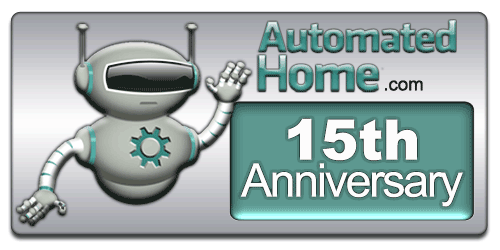
2011 sees Automated Home reach the ripe old age of 15. To celebrate our quindecennium (yes, really) we’ve asked some friends of the site to look back and give us their home automation highlights from the past decade-and-a-half. For an even greater challenge we then asked them to look ahead to what advances the next 15 years will bring to digital domesticity. The second of our special features comes from Johannes Rietschel, the CEO of Barix, a company we have featured many times over the years….
Johannes Rietschel, CEO at Barix –  Looking back, what do you think have been the biggest milestones for the Automated Home over the last 15 years? – This one is not a gadget, but it’s probably the biggest enabler over the last 15 years: The Internet. Access to and exchange of information in real time, for everyone. Traditionally, magazines had been available to spread information, but nowadays, everyone can contribute and discuss ideas with others easily and basically, without cost. This is especially important for applications like home automation where individuals, with their skills, still play an important role !
Looking back, what do you think have been the biggest milestones for the Automated Home over the last 15 years? – This one is not a gadget, but it’s probably the biggest enabler over the last 15 years: The Internet. Access to and exchange of information in real time, for everyone. Traditionally, magazines had been available to spread information, but nowadays, everyone can contribute and discuss ideas with others easily and basically, without cost. This is especially important for applications like home automation where individuals, with their skills, still play an important role !
And of course, technology advances, notably in the wireless and affordable touch screen sectors make it affordable for us to have nicely automated homes, and be able to interact with them.
Last not least – the ever rising cost of energy and the awareness that energy sources are limited helps us to argue with our better halves that we need to purchase this and that and add functionalities and upgrade the systems.

Looking forward what does the future hold for the Automated Home in the next 15 years? – In my view, we will see home automation systems being installed more and more, both for new homes as well as retrofitting. With further advances in the wireless technology (and price drops), at the same time increasing cost of resources and workmanship, it will be common to not physically wire, for example, lightswitches any more (especially in new construction).
It is known that saving energy is our best source of energy – and clearly, a home automation system can play a significant role in providing all comfort while saving energy. Being it control of optimized energy collection from renewable sources or smart management of temperatures, lights etc, there is a lot of potential.
Just as an example, i’d like to bring an example of what is possible today but will probably get used much more widespread in the future: low temperature floor heating and typical wall thermostats don’t really work well with each other, the very slow response of floor heating needs much smarter algorithms than a non-intelligent on/off decision (once the sun heats up a room). In my home, which is used as a lab often, we have successfully controlled the heating system with an adaptive prediction system based on weather forecast and history data remotely from a university workbench. High savings are possible, for example, by switching off the floor heating or even the heating system altogether at 5am if you know the sun will shine through the windows at 9am and heat up the house anyways… and this is just a simple example. Possibilities are almost endless, and for those involved it’s a lot of fun, too.
www.barix.com : Automated Home – the 1st 10 Years
Want More? – Follow us on Twitter, Like us on Facebook, or subscribe to our RSS feed. You can even get these news stories delivered via email, straight to your inbox every day

Johannes,
I’m very interested in what you write about control of underfloor heating. I’m in the middle of re-flooring at the moment, and we’ve decided to fit carera (stone) with electric matting under that.
I had been intending to fit a PID controller rather than a thermostat, but you have made me think a lot harder. Perhaps a computer-controlled PID, with the embedded side handling the PID response, and the computer simply instructing the PID with different set-points based on your outline.
Does this seem sensible?